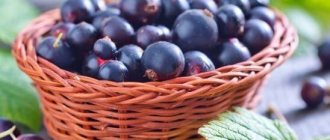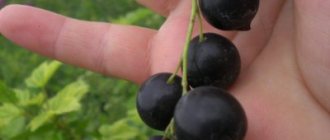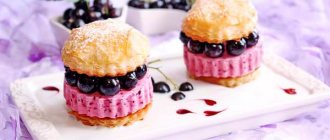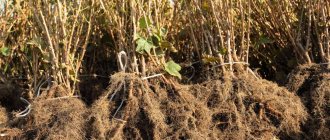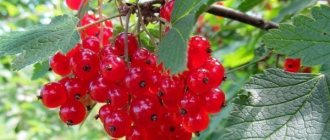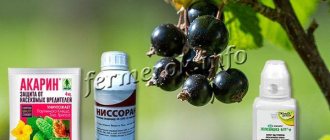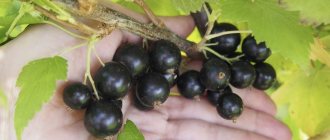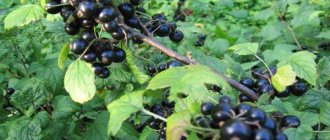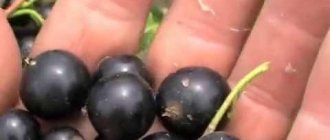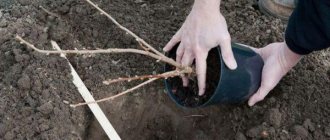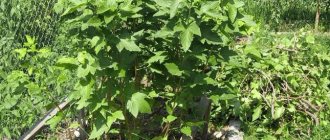A little history
This variety of currant appeared in the 19th century. Already in 1850 in France there was information about its existence. True, its origin remains a mystery.
A century later, in 1959, this variety of currants was included in the State Register of Breeding Achievements. It was recommended for cultivation in the following regions of the country:
- Central;
- Central Black Earth;
- North-West;
- Srednevolzhsky;
- Volgo-Vyatka;
- Uralsk.
This variety is still found in many regions of our country.
Advantages and disadvantages
White currant Versailles is popular among beginners and experienced gardeners. Its main advantages are presented in the list:
- High frost resistance. This makes it possible to grow Versailles white in all regions of our country;
- Self-pollinating. The plant will bear fruit even in the absence of other white currant bushes on the site.
- Presence of immunity to powdery mildew. Reviews from gardeners indicate that currants are not susceptible to many other fungal diseases.
- High yield.
- Early ripeness.
Disadvantages include:
- susceptibility to anthracnose;
- excessive spreading of the bush;
- demands on soil composition.
Advice! Despite the fact that the variety is considered self-pollinating, the highest yields are observed when there are several bushes (better than different varieties) of white currant on the site.
Currant leaves
Large five-lobed leaves are characteristic of the Versailles white currant variety. The photo cannot fully convey the dull green color with a bluish tint. But their shape is clearly visible. The side blades are moved apart. But the central part is shortened. The leaf blade is almost flat. If you look closely, you will notice that the veins on the lateral lobes are located at an obtuse angle (or close to a right angle). The basal lobes are well developed. Along the edges of the leaves there are blunt, short teeth. The lower leaves are drooping.
Description of the white currant variety Versailles
In the description of the variety it is noted that its bushes are medium (120–125 cm), spreading, standard, formed by relatively strong shoots. They are flexible and durable, covered with large, rich green foliage with a faint lilac tint. The outer side of the leaf plate is covered with fluff. It is heart-shaped in shape.
The flowers of the plant are saucer-shaped and medium in size. They are collected in long brushes. The petioles are also elongated.
Versailles currant has a powerful root system. Part of it spreads horizontally, occupying a 40-centimeter layer of soil and extending beyond the projection of the crown. Single vertical roots go 100 cm deep, but the main part of them spreads at a shallow depth.
Did you know? There is an American variety of black currant, the pulp of which resembles black semolina. It tastes very sweet.
Berries
A description of the Versailles white currant variety (photo can be seen below) would be incomplete without mentioning the berries. After all, it is for their sake that shrubs are planted.
The berries are quite large. They reach a diameter of 1 cm. At the same time, they weigh up to 0.7 g. The berries are round, transparent, with a yellowish tint.
The berries taste pleasant, sweet, and sour. They can be used for various purposes (blanks, compotes, etc.).
They contain many nutrients. 100 grams of berries contain 38 mg of ascorbic acid. Their composition is as follows:
- 18% dry matter;
- 7.5% sugar;
- 2.3% titratable acidity.
The Versailles white variety produces high yields. In one year, up to 8 tons of berries can be collected per hectare.
External parameters and characteristics
To ensure that growing Versailles white currants is as productive as possible, it is recommended to know its strengths and weaknesses and a detailed description of the variety.
Bushes
Versailles white currant is an early ripening plant. The bush forms a fairly developed underground part, its lateral roots are located at a depth of 40 centimeters. The main root is located at a depth of 1 meter.
The erect bush reaches 1.2-1.5 meters in height. The number of shoots is not so large, but they all have an intensive growth rate. The leaf blades have a rich dark green color and a bluish tint. There are 5 blades on them.
There is fine pubescence on the inner side. The edges of the leaves have short, blunt teeth. Fruit buds of Versailles white currant are formed only in the second year of life.
Flowers and berries
Versailles white currant attracts the attention of gardening enthusiasts with its ability to produce rich harvests. At the flowering stage, yellowish-white bells bloom on the bushes. There are flowers and berries on elongated straight petioles.
The size of the fruits in diameter is almost 10 millimeters, and their weight is up to 1.3 grams. Under favorable conditions, the bush is capable of producing up to 4 kilograms of delicious berries. The fruit pulp is dense, the skin is transparent and light cream in color. According to the description of the variety, Versailles white currant is not prone to shedding; the berries are firmly attached to the petioles.
The sugar content of Versailles white currant is 7.5%, and the acidity is 2.3%. Per 100 grams of product there are 38 milligrams of ascorbic acid .
See also
How can you feed currants in autumn, spring and summer for a better harvestRead
Resistance to low temperatures, drought and diseases
Versailles white currant has increased immunity to powdery mildew, but not to anthracnose, which must be taken into account when growing it. The plant's frost resistance is also at a high level; it can be planted even in northern regions. Resistance to dry weather is good, but keeping the bushes without abundant watering for a long time is not worth it. Irrigation measures are especially necessary at the stage of fruit bud formation.
Among the harmful insects, white currants can suffer from shoot aphids, which suck out all the nutrients, gooseberry moth, and currant sawfly. Elimination measures must be taken immediately after identifying the first signs of their presence on the bushes.
Productivity and use of fruits
The productivity indicators of Versailles white currant per hectare are 8 tons. The fruits have a universal purpose; they can be used fresh, for making desserts, and as a raw material for winter preparations.
Features of cultivation
Versailles white currant is distinguished by its early growing season. Already at the beginning of May, in some regions of the country, brushes and buds appear on the bush. The leaves appear not much later.
The bushes bloom for about 2-2.5 weeks. Abundant flowering will bring a large harvest. But if frost happens at this time, then you won’t have to expect much fruit. You can increase the number of berries grown in one simple way: grow several bushes at once. Thanks to this, plant pollination will be carried out more efficiently.
The root system is well developed. Roots growing vertically can reach a depth of 1 m in width, they are located within 30-40 cm. These features of the root system must be taken into account in the process of loosening the soil.
For planting currants, choose fertile soils whose acidity does not exceed pH 5.5. Shrubs also grow well on clay (loamy) soils. The plant also feels great on lighter soils. But in this case, humus must be added before planting.
Sunlight is also necessary for growing this variety. Plant the plant on a hill. But there should be no drafts. Therefore, places along buildings and fences are often chosen. Otherwise, the above description of Versailles white currant will be inaccurate. The bush will be weak, the yield will decrease, and the ability to withstand winter will deteriorate.
When and how to plant
You can plant white currants both in spring and autumn. However, this must be done on time
When planting in spring, it is very important that the seedlings have not yet bloomed. Otherwise, their survival rate will be low and the bush may become diseased.
The first step is to prepare the area
Important! White currants should grow in well-lit areas. Unlike black currants, it does not tolerate even the slightest shading. White currants love fertile soils
Its reaction should be neutral or slightly acidic. If the site has acidic soil, then lime should be added to deoxidize it. If the soil is poor, humus is also added. The pit for planting seedlings is prepared at least two weeks in advance. If planting takes place in the spring, then it is advisable to dig it up in the fall. The diameter of the hole is relatively small - 50 centimeters wide and 30-35 deep. There should be a distance of at least 1 meter between bushes. In addition to humus (1 bucket), 50 grams of urea or ammonium nitrate, 50 grams of superphosphate and 50 grams of potassium sulfate are also added to the bottom of the planting pit. All these fertilizers are covered with a layer of soil of 5 centimeters. This is necessary so as not to burn the roots of the young plant.
White currant loves fertile soil. Its reaction should be neutral or slightly acidic. If the site has acidic soil, then lime should be added to deoxidize it. If the soil is poor, humus is also added. The pit for planting seedlings is prepared at least two weeks in advance. If planting takes place in the spring, then it is advisable to dig it up in the fall. The diameter of the hole is relatively small - 50 centimeters wide and 30-35 deep. There should be a distance of at least 1 meter between bushes. In addition to humus (1 bucket), 50 grams of urea or ammonium nitrate, 50 grams of superphosphate and 50 grams of potassium sulfate are also added to the bottom of the planting pit. All these fertilizers are covered with a layer of soil of 5 centimeters. This is necessary so as not to burn the roots of the young plant.
The seedlings are carefully placed in the hole, straightening the roots in different directions. White currants should be planted at an angle of 45 degrees.
It is also very important that the root collar is buried approximately 7 centimeters. After planting, young plants should be watered at the rate of 1-2 buckets of water for each bush.
The soil around the seedlings is mulched after watering. This procedure will help retain moisture for as long as possible. And the very last job after planting is pruning. Young seedlings need to be cut short, leaving only 3-5 buds on each shoot. It is advisable to leave no more than 2-3 shoots themselves. If this is not done and the seedling is left in the condition in which it is, then it will be difficult for the bushes to take root and, most likely, they will die.
Landing
Planting and caring for Versailles white currants are similar to many other varieties of berries. The plant is planted both in autumn and spring. In the first case, you need to do it before the onset of frost (late September or early October). In the second - until the buds open.
They start by preparing the soil. This is done approximately 2 weeks before the intended planting. The area is cleared of grass and weeds and dug deeply. A hole is made measuring 50x50 cm and approximately 40 cm deep. Fertilizers are applied. Use 10 kg of compost (humus), 40 g of potassium sulfide and 100 g of superphosphate. Fertilizers are mixed with fertile soil. The mixture is poured back into the pit. Soil acidity should not exceed pH 5.5. If necessary, neutralization is carried out with wood ash. It is necessary for the indicated area to be approximately 0.5 kg.
Next, you can choose a seedling. He must be healthy and undamaged. The branches have a rich green color. If you cut them, they will be wet. The root system should be well developed, without damaged or dry areas, and without signs of disease.
Proper planting is the key to a future good harvest. The planting process can be divided into the following stages:
- In a hole prepared in advance, where fertilizers have already been applied, a depression is made. A seedling is placed in it. The angle between the shoots and the ground should be approximately 45 degrees.
- The root collar is buried approximately 10 cm (no more) below ground level.
- The roots are spread well, covered with soil and compacted.
- Water the plant with 1-2 buckets of water.
- The tree trunk circle is mulched with a layer of up to 5-6 cm. For this you can use sawdust, peat, humus, and so on.
- The seedling is pruned. The 5 lower healthy kidneys are left.
If several plants are planted, then the distance between them is left at least 1 m. An interval of 1.5 m is maintained between the rows.
The first harvest can be harvested in the 3rd year of life. Maximum yield will begin after the 6th year.
Composition and benefits
The berries contain a large number of substances beneficial to humans:
- Carbohydrates;
- Mono- and disaccharides;
- Pectin;
- Proteins;
- Fats;
- Organic acids;
- Vitamins;
- Microelements.
Berry composition
White currant: care and cultivation
The chemical composition of the berries can be represented as follows:
- Total sugars – 8%;
- Dry matter – 18%;
- Titratable acids – 2.3%;
- Ascorbic acid content – 38 mg/100 g.
Interesting fact. In terms of vitamin C content, Versailles white currants are not inferior to red and black ones. It also contains P-active substances, which together with vitamin C strengthen the immune system.
White currant berries are an excellent anti-allergy remedy for people who have reactions to colored berries and fruits. But due to the high acid content, you should not get carried away with berries with high acidity for gastritis, as well as peptic ulcers. Sour berries can provoke an exacerbation of such diseases.
Care
Versailles white currant requires frequent fertilization. It is recommended to fertilize the plant every day. In the spring, fertilizing begins with the addition of ammonium nitrate, potassium sulphide and superphosphate. Once every 3 years, a bucket of organic matter is added. Other experts recommend a second method of adding nutrients. It consists of fertilizing in the spring with nitrogen fertilizers. All other additives are added after the fruit appears. Chlorine fertilizers can only be applied in winter. Wood ash is also added, which improves the taste of the berries and helps fight pests.
The older the bush, the more fertilizer it requires. Weak plants are fed with liquid fertilizers in two stages: during flowering and after harvesting the berries.
Currants are sensitive to weeds. Therefore, the tree trunk circle should be regularly weeded and the soil loosened. You can replace these works with mulching.
The yield will be higher if the plant is watered regularly. For the same purpose, the bush is pruned. Versailles white currant loves moisture, but does not tolerate stagnant water. For this purpose, the plant is watered 3 times a week. They do this in the morning and evening, when there is no sun. Twice a day, pour 1 bucket of water under each bush.
In addition, annual pruning protects the plant from disease. The first pruning is carried out the following autumn after planting. Over the course of a year, the bush should produce 6-7 healthy skeletal branches. You need to leave half of them, that is, 3-4. They choose the strongest and strongest. The remaining branches are cut off without leaving stumps. The same procedure must be carried out annually. Thanks to this, by the age of five, the shrub will have up to 18 skeletal branches from each year. Later the bush needs to be updated. For this purpose, branches that reach 7-8 years are removed. Young shoots are left in their place. Diseased and damaged branches are regularly removed. And also those that lie on the ground darken the bush and grow incorrectly.
It is important to choose the right time to trim. In the spring, begin pruning until the buds open. At this time, the tops of the heads that froze during the winter frosts are removed. In summer, the tops of young shoots are pinched. The main pruning is carried out in the fall, when the leaves have fallen. Dry branches can be removed at any time.
In order for the plant to survive in winter, it must be covered. To prepare for the cold period, the following procedures are carried out:
- Pruning the plant after the leaves fall.
- Loosening the soil, applying fertilizers, watering.
- Mulching the tree trunk circle with a layer of 10-12 cm. Use compost or humus. This will protect the roots from freezing.
- The branches are tied into one bundle with twine along the entire height. Everything is covered with film or agrofibre on top.
Carrying out these measures will protect the plant from severe frosts.
Method of propagation, planting and caring for the bush
White currant Versailles: video about the variety
Like any currant varieties, Versailles currant can also be propagated by layering, cuttings or by dividing the bush.
Layering is the first method, the specifics of which we will analyze. This method is considered by gardeners to be the most reliable and widespread, and here's why:
- in the very first weeks of spring, when the movement of minerals and sap in the plant has not yet begun, you can dig a groove around the bush about 10 centimeters deep. It is necessary to add fertile soil into the same groove, which the gardener prepares in advance just for these very purposes.
- Next, the gardener examines the bush and selects several shoots that are either one or several years old. They are bent down, leaving the top in the place where it should be - at the top. The stem is then secured with metal brackets, and fertile soil is poured on top and watered abundantly
- when the Versailles currant takes root, a characteristic shoot appears
- when the currant bush reaches a height of ten centimeters, careful hilling is carried out to the middle of the shoots
- After about two weeks, future seedlings should be earthed up again; drying out of the soil can lead to the plant refusing to function and grow normally, so it is extremely important to monitor moisture regularly, especially during periods of frost.
Already closer to the autumn period, completely full-fledged Versailles currant seedlings grow on the layering, which the gardener can transplant to a permanent place where the bush grows. Plants that are grown from layering begin to bear abundant fruit approximately in the second, sometimes in the third, year after planting. This method, in principle, is considered one of the most suitable and very convenient, and many gardeners, especially those with experience, use it.
Versailles currant can also be propagated by cuttings. Cuttings should be cut around February, separating them from one-year or two-year-old shoots. A cutting that has already formed five to seven buds should be cut to a maximum length of 20 centimeters. The cuts are made carefully, diagonally, sprinkled with ash. The lower part of the petiole is placed in settled water so that it begins to produce a root system. Without it, propagation is also impossible, and you should pay attention to the quality of the root system right before planting.
When consistently warm weather arrives, the cuttings are placed in a bed with loose soil at an angle of 45 degrees. You should also install several plastic cans on top in order to create an artificial greenhouse, because humidity plays a significant role here. Seedlings should be planted in a permanent location approximately two years after the gardener begins propagating by cuttings. While the currant cuttings are developing and entering the phase of active growth, it is extremely important to feed them, as well as water them with warm, settled water, only in this case will they exhibit growth efficiency and speed.
Experienced gardeners emphasize that it is best to plant Versailles white currants around the very beginning of September. In this case, the plants will have enough time to take root and prepare for the harsh winter period. You can plant currants in the spring, while the buds have not yet begun to show active signs of life and swell: swelling should occur when the plant begins to be saturated with useful substances from the soil. As for the planting site, it must be well lit, there should be no strong winds or drafts, since the bushes do not tolerate cold winds very well. It would be best to plant Versailles currants along fences, as well as near buildings, so that these same fences or walls protect the plants from strong winds and drafts. If there is abundant accumulating groundwater on the site, then it is best to prepare high-quality drainage. It is best to plant shrubs on a hill, since this way the water will go deeper into the ground and the root system of the plant will be absolutely safe.
The hole in which currants are planted should be up to half a meter deep, and the diameter should be identical. When digging, the soil should be placed on one side, as it will be needed for further design of the currant bed. Organic matter is also added to the soil, such as manure, and about 500 milliliters of wood ash to improve the condition of the soil and its acidity. All this should be thoroughly mixed until a homogeneous soil mass is obtained. The next stage is the preparation of seedlings and their planting in open ground, and this stage should be taken with full responsibility.
Before planting, the seedlings are once again very carefully inspected, the root system is checked, and any damage must be immediately detected. If there are too many of them, then it is best to refuse to plant this shrub. If the roots are very long, then they should definitely be shortened and left from 15 to 20 centimeters. Currant seedlings of the Versailles variety with an open root system are best left overnight in a growth stimulator, or in a solution that includes honey. This will allow the roots to wake up, get some energy, and then demonstrate a high level of growth.
At the planting stage, you should adhere to some rules of agricultural technology, since this increases the chance that the plant will receive sufficiently good care, and in general the conditions for growth will be as favorable as possible, and this is extremely important:
- the hole, which is already filled with pre-prepared soil, is filled with water, and it must be completely absorbed
- The seedling is placed in the ground at an angle of 45 degrees. The immersion depth should be approximately 7-10 centimeters lower than the cutting grew before this stage of planting
- After the bush is sprinkled with earth, it should be thoroughly watered. this will ensure that all the air leaves from under the roots, and this is very important for the further development of the shrub and its root system. Also, thanks to this, the seedlings will begin to demonstrate a high level of growth faster. When the water is absorbed into the soil, pre-prepared fertile soil made from manure and ash, as well as mulch, is sprinkled on top. In this case, moisture will remain much longer, but in a normal, suitable amount so that the root system is not damaged.
Another step is to prune the seedlings immediately after they are planted. Shoots no more than 15 centimeters in length are left above the surface. There should be no more than six fully formed buds on the shoots. Some novice gardeners very often simply skip this stage, as a result of which the plant becomes quite weak. The planted bushes must be hilled up; the gardener pours humus or compost into the near-trunk part. This way the root system will be protected from some pests and fungi, as well as from possible freezing.
As we have already noted, Versailles white currant is completely unpretentious in care. Care comes down to the fact that the gardener must perform the most standard operations - timely watering the bushes, weeding the weeds so that they do not take away the energy from the plant; superficially loosen the soil and periodically feed it to replenish the reserves of depleted soil; trim shrubs and treat them to protect them from pests and diseases that can sometimes harm plants, especially at the stage of their primary adaptation to the natural conditions of open ground.
Versailles currants love to be watered abundantly. If suddenly there is a lack of moisture, this will simply lead to a decrease in the rate of plant development. In addition, a lack of moisture will lead to the fact that the berries will be tasteless, small, and the yield level will decrease. The most abundant watering should be done twice - in the spring, when the plant is just waking up and begins to prepare for the period of flowering and fruiting; in the fall, when fruiting is already completed. You can also provide more moisture during the flowering of the plant, as well as when filling the berries, because the moisture goes into the juicy pulp of the currant fruit.
Immediately after watering has been completed, it is best to wait until the water is completely absorbed. After this, the soil is loosened and the weeds are removed. This must be done with great care so that the root system, which is located very close to the surface, is not damaged by the gardener himself during all these manipulations.
Versailles currant responds very well to timely fertilizing. In spring, shrubs are watered with tinctures based on mullein and bird droppings, but care should be taken to prevent burns. Microfertilizers are excellent for fertilizing in the summer - zinc sulfate, manganese sulfate, boric acid and many other components that have an excellent effect on plants and their growth. When the bush bears fruit, you can water it with tinctures of green grass; they are completely safe and do not cause any negative effects on the plants.
As experienced gardeners note, the plants are quite resistant to many diseases and pests. Be that as it may, it is necessary to periodically use some preventive measures to prevent weakening of the immune system. Special professional products are used for processing. Bordeaux mixture and copper sulfate are also popular as one of the most economical but effective preparations for plant protection.
Versailles white currant bushes are pruned several times a season to maintain the plant not only in good external condition, but also to replenish some of its losses in terms of mineral components and substances. The first pruning - sanitary and also formative - is carried out by the gardener in the spring. In summer, it is best to cut out branches that have been affected by disease, or have simply dried out and no longer show any vital activity. In the fall, branches that have already dried out are removed, and corrective pruning is also carried out. Thanks to this, the Versailles currant begins to develop better; energy is spent on making healthy branches grow, and not on maintaining branches that have already dried out and will not give any positive result. Every year it is necessary to leave about five shoots of annuals. As a result, with proper pruning and processing, after a few years the plant turns into a powerful fruit-bearing bush that perfectly tolerates diseases and various development problems.
Diseases and pests
All scientific descriptions and reviews of Versailles white currants left by experienced gardeners are united in one thing: this variety is resistant to powdery mildew, but is very often affected by anthracnose.
This disease manifests itself as brown spots on the leaves, which increase in size over time. Control methods include treatment with colloidal sulfur or Bordeaux mixture. Spraying is carried out when the first signs of the disease appear. Prevention of the disease consists of regularly digging and loosening the soil, burning pruned branches and fallen leaves. Before the buds appear, the bush is treated with Nitrafen.
Cases of plant infection with powdery mildew sometimes occur. The disease appears as a gray coating on the surface of the entire bush. For prevention, the plant is treated with a solution of copper sulfate until the buds open. If the plant does become sick, it must be sprayed with Fitosporin.
Another disease is glass rust. With it, yellow “pads” appear. They contain fungal spores. In case of disease, the plant is treated with Tsiram, Captan or Bordeaux mixture. Preventive measures are the same as for combating anthracnose.
Among the pests most often seen on Versailles white currants, shoot aphids, gooseberry moths and currant hoppers are noticed. Signs of pests and methods of combating them can be seen in the photo below.
Advantages and disadvantages
The main advantages of white currant variety Versailles:
- large tasty fruits;
- large berry clusters;
- long petioles.
Due to this, it is very easy to harvest without injuring it. The commercial characteristics of the fruit are also high. Find out when red currants ripen here.
The main disadvantage of the variety is the spreading form of the bush. The crop must be handled very carefully, since the shoots are thin and brittle.
The variety is afraid of diseases - it is not susceptible to infection by all fungi, but anthracnose can cause enormous damage to the crop. As you can see, the culture has many more advantages, but you also need to know about the disadvantages in order to simplify care and avoid unnecessary troubles.
For pruning and other preventative work, use well-sharpened pruning shears rather than scissors - this way the risk of injury to the plant will be much lower.
Reviews from gardeners
Gardeners leave various reviews about Versailles white currants. Some admire the taste of the berries and the attractiveness of their clusters. Others argue that the berries are too sour and the seeds are too large. But everyone confirms that with proper care the plant will delight you with a bountiful harvest. Berries are good in various forms. They are canned, frozen, and compotes are made from them.
The Versailles white variety of red currant will delight its owners with a harvest of sweet and sour berries. Only for this you need to make some efforts. And the plant will definitely respond to care.
Harvesting and transportation, keeping quality of berries
The Versailles currant has a late start to fruiting. The first fruits, judging by reviews, appear only three years after planting. Full fruiting can be expected no earlier than the sixth year.
The berries do not ripen at the same time, but the harvest can be harvested in one go, since ripe fruits can hang on the bush for some time. Harvesting usually takes place in late July - early August.
You can determine the ripeness of berries by their appearance. The veins and seeds become visible through the skin, and the flesh acquires a sweet and sour taste. Collected fruits do not stay fresh for long - a few days, so they must either be eaten immediately or processed (jams, compotes, jams, baking filling, freezing).
Learn how to make currant jam.
The Versailles currant deserves to have as much space as possible allocated for it on the plot: despite the late fruiting period, its harvest is plentiful. The berries are characterized by good taste and versatility in use.
Main characteristics
Versailles white currant is an early variety with high yield. With proper care and good conditions, you can get up to 4 kg of berries from one bush.
The berries are round in shape and light yellow in color and transparent. The diameter of the berries reaches 8-10 mm, each weighing up to 0.7-1.3 g. At the same time, their taste is sweet-sour and aromatic. The foliage has a rich green color with a slightly lilac tint. The leaves are quite large in size with blunt teeth along the edges, the base is deeply heart-shaped.
